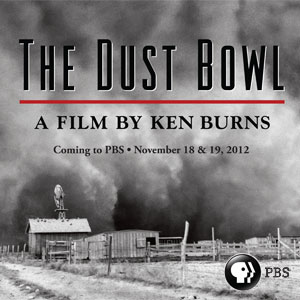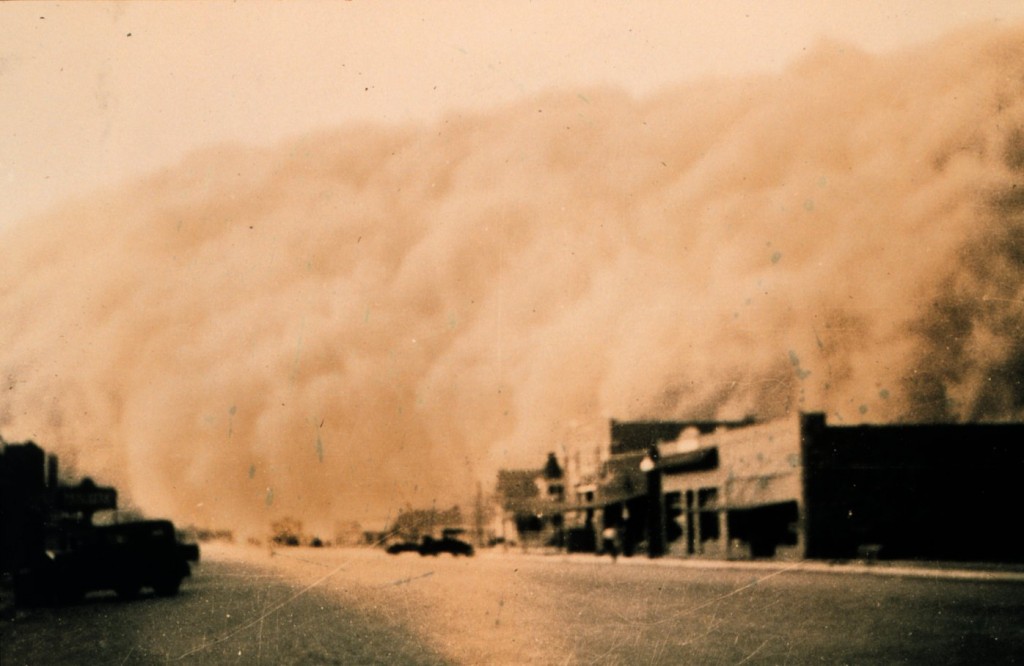I’ve lived in Oklahoma for the majority of my life. In other years, I lived in southeastern New Mexico and West Texas, areas that are environmentally very similar to the western parts of Oklahoma. The Dust Bowl of the 1930’s has always been talked about, but I don’t think I truly appreciated what happened, until now. It’s a very blunt lesson of what can happen when a lack of respect for the environment and ecology comes face to face with human greed and ignorance.
“The Dust Bowl, or the Dirty Thirties, was a period of severe dust storms causing major ecological and agricultural damage to American and Canadian prairie lands in the 1930s, particularly in 1934 and 1936. The phenomenon was caused by severe drought combined with farming methods that did not include crop rotation, fallow fields, cover crops or other techniques such as soil terracing and wind-breaking trees to prevent wind erosion.[1] Extensive deep plowing of the virgin topsoil of the Great Plains in the preceding decade had displaced the natural deep-rooted grasses that normally kept the soil in place and trapped moisture even during periods of drought and high winds. Rapid mechanization of farm implements, especially small gasoline tractors and widespread use of the harvester-combine were significant in the decisions to convert grassland (much of which received no more than 10 inches (250 mm) of precipitation per year) to cultivated cropland.
During the drought of the 1930s, without natural anchors to keep the soil in place, it dried, turned to dust, and blew away with the prevailing winds. At times, the clouds blackened the sky, reaching all the way to East Coast cities such as New York and Washington, D.C. Much of the soil ended up deposited in the Atlantic Ocean, carried by prevailing winds. These immense dust storms—given names such as “black blizzards” and “black rollers”—often reduced visibility to a few feet (a meter) or less. The Dust Bowl affected 100,000,000 acres (400,000 km2), centered on the panhandles of Texas and Oklahoma, and adjacent parts of New Mexico, Colorado, and Kansas.[2]
Millions of acres of farmland were damaged, and hundreds of thousands of people were forced to leave their homes; many of these families (often known as “Okies“, since so many came from Oklahoma) migrated to California and other states, where they found economic conditions little better during the Great Depression than those they had left. Owning no land, many became migrant workers who traveled from farm to farm to pick fruit and other crops at starvation wages. Author John Steinbeck later wrote The Grapes of Wrath, which won the Pulitzer Prize, and Of Mice and Men, about such people.”
Many years later, these devastating years in our young state, bookended on one end by the years of the Great Depression and on the other by World War II, still have an impact on the psyche of our state. There’s an independent streak in our people, a determination to be self-reliant, and a thin skin when it comes to anything that disparages the image of what it means to be an Oklahoman. For many, the term “Okie” continues to be a serious deprecation and insult.

So why am I writing about this? The master documentarian and storyteller, Ken Burns, has come out with a new project, entitled “The Dust Bowl.” It aired on PBS stations the last two nights and it was a real eye-opener for me. This masterpiece captures in a new way the sheer immensity of this man-made disaster and how it impacted so many lives. The storms themselves were such incredible acts of nature that it’s impossible to put them into any reasonable perspective. But the storms are only part of the story. Following on the heels of the storms were plagues, illnesses, psychological destruction, economic collapse, and one of the largest migrations of Americans from one area of the country to another.
If you have an interest in American history, I encourage you to watch this two part series (about 4 hours in length) from Ken Burns. The full episodes are currently available for free at pbs.org.
